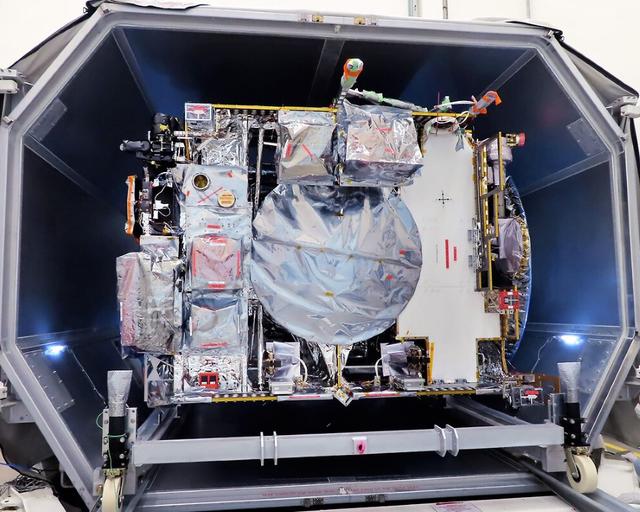To the Moon and beyond
Airbus Crisa’s participation in demanding missions to the Sun, Moon, Mars and other planets and out into deep space are helping answer such fundamental questions as how were the Earth and other planets formed…is there other life in the solar system…and what happened after the Big Bang?
The space probes that are unraveling these mysteries rely on mission-critical equipment and systems from Airbus Crisa for power management, monitoring and analysis, control electronics and processing.


JUICE
Power system for planetary exploration
When the European-built Jupiter Icy Moon Explorer (JUICE) arrives at the solar system’s giant gas planet, the mission will rely on Airbus Crisa’s power subsystem – which is vital for the spacecraft’s operation.
Airbus Crisa’s expertise and technology are key in meeting the challenges to develop and build this power subsystem, as JUICE must withstand the high radiation levels and electromagnetic emissions around Jupiter.
JUICE operates on electrical power provided by the spacecraft’s solar panels, and Airbus Crisa mastered the digital control required for the converters that help provide the maximum energy from these solar panels.


Lunar Gateway
Power management for the Lunar Gateway
As humans set their sights on returning to the Moon and taking the steps beyond, Airbus Crisa has an important role by designing and manufacturing the power management system for the Habitation And Logistics Outpost (HALO) – which is to equip the Gateway space station as it orbits the Moon for at least 15 years.
In welcoming astronaut crews as well as visiting spacecraft, all of the energy utilised by HALO will be controlled by Airbus Crisa’s power management system, providing a maximum power capacity of 32 kW and utilizing a highly reliable architecture with autonomous failure compensation.
Airbus Crisa conceived the system to be highly configurable once in orbit, perfectly adapting it to the diversity of operational parameters required during various phases of the HALO mission.
The HALO power management system underscores Airbus Crisa’s capabilities to meet the demanding requirements of human-rated operations, and confirms its capabilities to be a European partner on international missions that explore new frontiers.
Image credits: NASA


Curiosity and Perseverance rovers
Learning more about the Mars environment
Airbus Crisa is contributing to the understanding of Mars’ environment with its monitoring and analysis systems on the U.S. NASA Curiosity and Perseverance rovers, which have been exploring the red planet since 2012 and 2021, respectively.
The Airbus Crisa-built Rover Environmental Monitoring Station (REMS) on Curiosity has an important role in studying the planet’s environmental conditions and assessing its habitability by measuring ultraviolet radiation that reaches the surface.
On Perseverance, Airbus Crisa’s Mars Environmental Dynamic Analyser (MEDA) is a comprehensive meteorological station, with radiation and dust sensors that characterize the Martian dust distribution and properties. This information helps scientist understand ongoing weather patterns and contributes to the preparation of future plans for human and robotic missions to the planet.
Image credits: NASA/JPL- Caltech


Mars Sample Return
Power and propulsion for the Mars Sample Return Mission
When the samples from the surface of the Red Planet are brought back to Earth in 2033, the carrier of this precious cargo will depend on Airbus Crisa in completing the Mars Sample Return mission.
This inter-planetary carrier, called the Earth Return Orbiter (ERO), is a seven tonne spacecraft that will be equipped with Airbus Crisa’s electronics to control and condition its electrical power. Airbus Crisa also has been tasked with providing the Power Propulsion Units for control of the ion-gridded engine that is to propel the orbiter on its way back to Earth.
Overall responsibility for the ERO mission has been assigned to Airbus Defence and Space, which is developing the spacecraft and conducting the mission analysis. During ERO’s five-year mission to Mars, the spacecraft will act as a communications relay with the rovers on the planet’s surface and then will receive the samples for the return to Earth.
